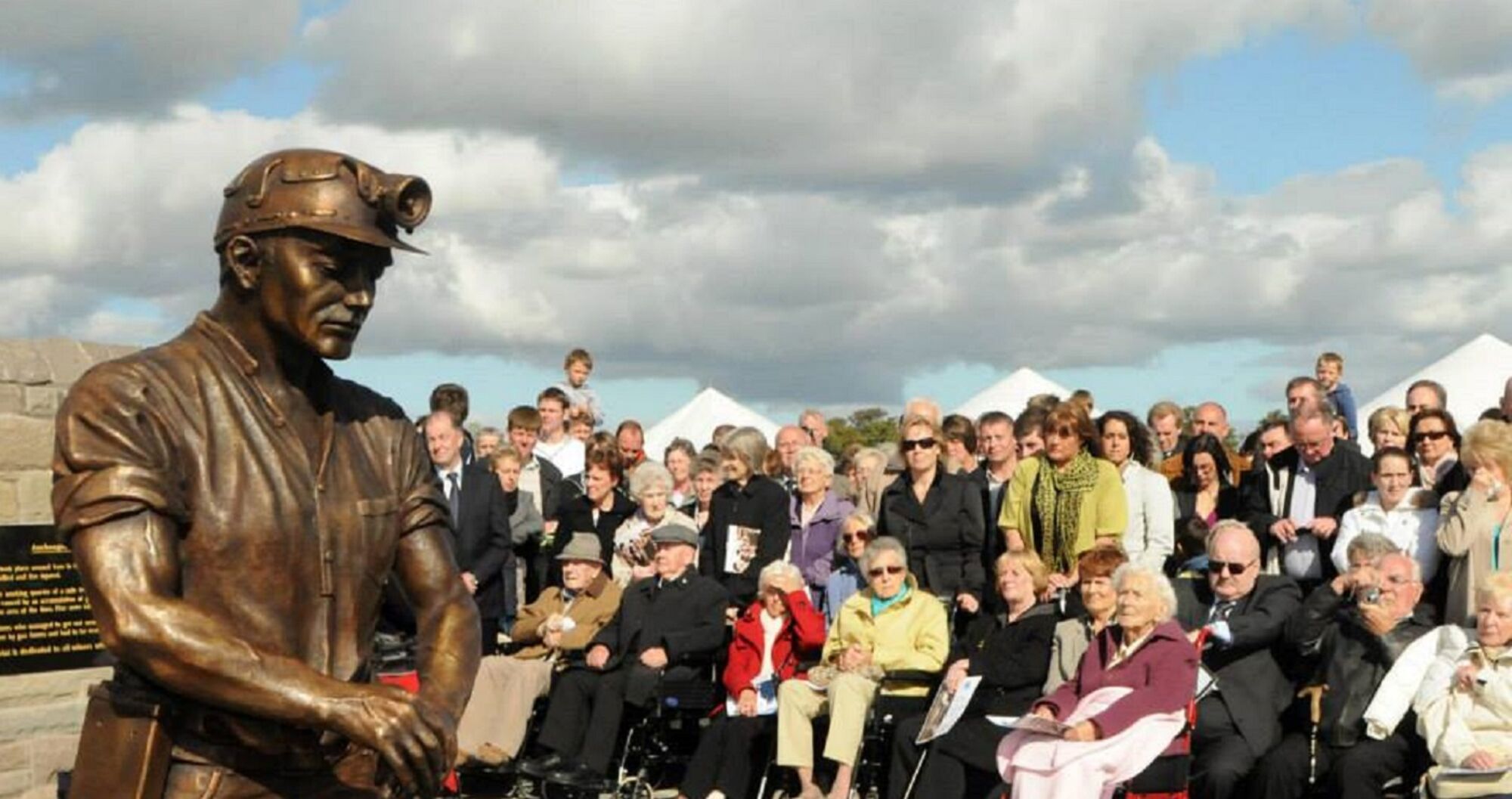
Growing up in a mining community
Growing up in a mining community
The towns and villages which grew up around collieries were often marked by their close association with the mining industry.

Coal mining was often the major employer in the settlement and the rhythms of daily life revolved around the pit, including patterns of socialising through institutions such as Miners' Welfares as well as more informal associations between neighbours.
The image above shows the Auchengeich Miners' Memorial statue. It was unveiled in Moodiesburn during 2009 to mark the 60th anniversary of Scotland’s worst mining disaster in the 20th century – the death of 47 men at Auchengeich colliery in Lanarkshire following an underground fire on 18th September 1959. An annual memorial service is held to remember those who died.
"The Board should realise that they were not discussing a mining engineer’s opinion but the social life of a mining village."
Abe Moffat, President of the National Union of Mineworkers Scottish Area during the closure proceedings of Baton colliery during 1950.
Notes of proceedings between the Scottish Divisional Coal Board and the National Union of Mineworkers Scottish Area (NUMSA) regarding the proposed closure of Baton colliery held at 58 Palmerston Place, Edinburgh on Monday 8th May 1950. Coal Board 222/14/1/21A, National Records of Scotland, Edinburgh.
Community stories
Margaret Wegg, a miner's daughter and wife who worked at the Cardowan colliery canteen on life in Cardowan village. She was speaking in 2014.
"When the snow was on the ground, we used to sledge down the street and straight into the field, you know. You had to duck under the wire, but we used to you know or we used to go into the field and play. I mean, we used to play out in the street and our parents used to. Well, ma mum and Gladys stayed across the road. It was all mining families. And my mum and them used to go out in the street and play rounders. We’d play tennis, you know. They played with the kids. No the first time the knock had come to the door, 'is your mum coming out to play?'"
Recollections from a focus group in Shotts during 2014.
Willie Scott:
"New Years morning there wasn’t a door that was locked you could go into any door just the streets were absoloutely mobbed."
Betty Turnwood:
"Monkey Wilson he went down the well at Tinsel Park he went down the park two or three times a year."
Bettie Davey:
"They threw money in."
Willie Hamilton:
"Men came up the pit on a Friday and they got their wages in loose change they threw into the well Kingshill 3 they emptied it at the fair holiday and New Year and the money aw went to the Anderson Home in Wishaw."
More resources
Historic Environment Scotland Canmore record - Auchengeich Colliery
Details of the site, including photos.
Details of the 1969 Auchengeich Colliery fire, the workers who died and the enquiry.
Northern Mine Research Society
Details of the 1959 Auchengeich Colliery fire, the workers who died and the enquiry.
Footage (unused) of people in Auchengeich during the 1959 fire.
Facebook group dedicated to the miners killed in the Auchengeich pit disasters of 1931 and 1959.
Reflections of the sculptor John Mckenna on creating the Auchengeich Miner memorial sculpture.
Image credits
-
Unveiling of the Auchengeich Miners Memorial on the 50th anniversary of the disaster in 2009, Auchengeich Miners Memorial Facebook
- Buckhaven Miners' Welfare. Photograph by James Galt. Published on Flickr (CC BY-ND 2.0)
Citation
Cite this resource as: Gibbs, Ewan. Growing up in a Mining Community, Energy in History. University of Glasgow, 2022

